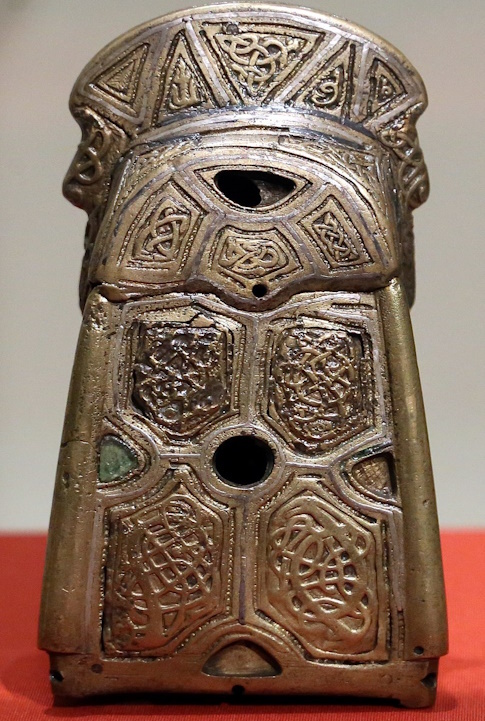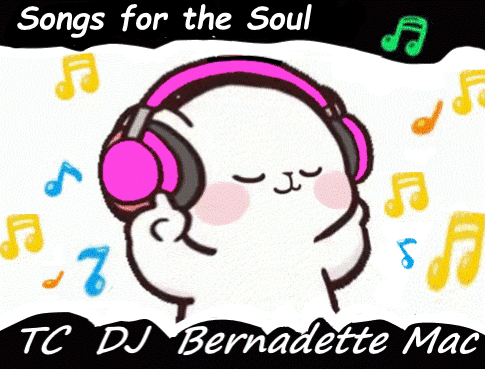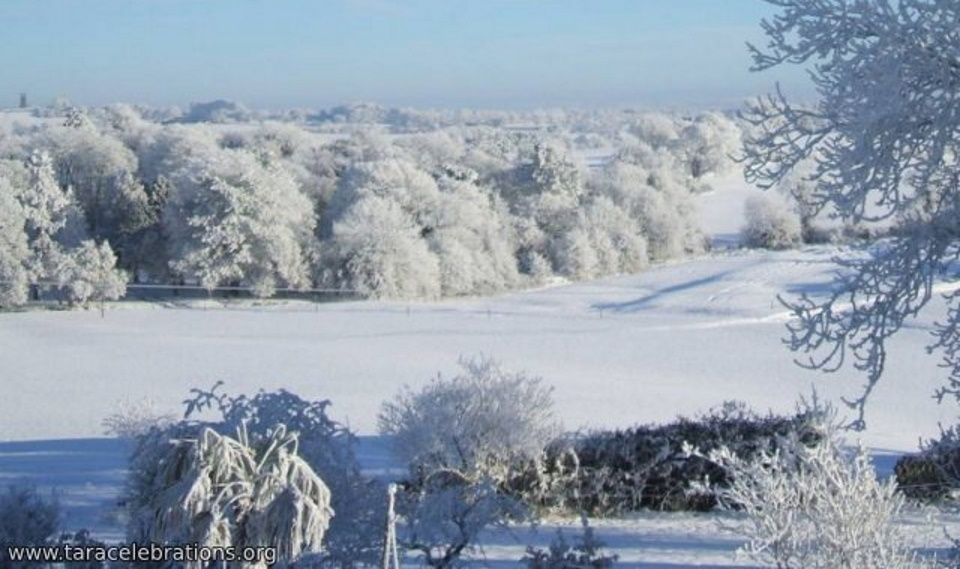Music

Ita O'Donovan from Clifden -
Ancient traditions hold that earth is sung into being, each single thing and there’s a naming. So came sound and before the word written came remembrance and its boundaries.
Remembrance needed repetition so the singing could travel, pass from one to the other like sean-nós. Yet each singer was unique and each time added something new to the old and the true. Without the singing of a country, what is held is lost. When that happens it must be sung back, grandparent to child, child to grandchild.
Search now for the tuning fork then listen, listen. Search in the unnamed and the sacred places. Search quickly.
At a Celebration nothing beats live music, drumming, singing, guitar or harp, or the traditional bodhran drum. Outdoors recorded music works but often speakers are not efficient / loud enough to be heard in the wind.
 |  |
Bells
Water, when drunk from a bell shrine, was believed to have healing properties.
Walking to the jingle of bells on the Hill of Tara - Bealtaine 2010 ... and drums ready for action on Tara - Samhain 2008 ....
Four-sided
hand-bells are emblematic of the early Irish church. They were used
from St Patrick’s time in the 5th century and – like the cow-bells they
copied – were made at first from sheet iron. Serving initially to regulate monastic life, they soon came to be rung both in the liturgy and in wider Christian ritual. The-ancient-hand-bells-that-still-ring-true-for-every-christian-faith-on-these-islands
But Patrick was armed with something far more powerful against evil spirits than mere commands. He had his melodious sounding bell, which had been given him by angels, and which since his time has been known by the name of Finn-Foya, " Sweetvoice." Now of all sounds in the world, it seems the tinkling of a consecrated bell is the most intolerable to a demon ; and the silvery tones of this particular bell — the Finn-Foya— had more terror for our Irish reptiles than all the other bells of the country set ringing together. So when the Saint saw that the reptile brood were plainly disregarding all his commands and threats, he uncovered the bell, which brought them at once to their senses ; and at the first tinkle they rushed forward in a body up the side of the hill, merely to get beyond range of the hated sound.
They soon reached the summit, and had not long to wait before the Saint came up. He made a sign that they should come close to him ; and the bewildered reptiles crowded round him to hear their doom. No escape. Pointing to the sea far beneath the brow where they stood, he ordered them forward ; and to prevent any further dallying he began to uncover the Finn-Foya. This was enough : down the steep incline they rushed and tumbled helterskelter ; and before the bell was freed from its case, they had got half way to the waves. Wonders of Ireland by Joyce
So many Irish saints had bells:
St Sennan's Bell Shrine- 8th March - St Sennan | Bell and shrine of St. Conall Cael - mcah.columbia.edu/treasuresofheaven |
Chant
Music talks directly to our souls through vibration.
Buddhist lineage has no musical accompaniment to sitting meditation. We are as Buddha under the Bodhi tree, although listening to sound is a mindfulness meditation in itself.
Chanting mantras is a preparation for meditation. Alone or as a group we often use Om mani padme hum. This is a Sanskrit mantra for the bodhisattva of compassion. Invoking energies - Mani "jewel"Padma "lotus flower", the Buddhist Sacred Flower, “om” sound of creative universe.
Pali recitations are often thought to have a supernatural power. It is the sound and rhythm of the word rather than or as well as the meaning that has power.
In the West sacred music has three basic formats – individual, antiphonal or choir. Ancient Egyptian, Latin or Hebrew in the mystic traditions of the West had all three.
- Individual priest singing is often a Plainchant.
- Hebrew psalms renders it probable that the antiphonal method – responses between a priest and congregation - was present in the services of the ancient Israelites.
- Gregorian chant is also often in Antiphon form with priest and responses.
Sacred music is frequently sung in an unfamiliar language, such as Latin. This is often because we do not understand what the words mean and so they do not interfere with the meditation experience.
Celebrating Summer Solstice in the deconsecrated church (now Visitor Centre) on the Hill of Tara Coscan play and people dance.

Early on the church recognised that it's congregation should not play music in solitude, and there was and is a movement away from the traditions of the hermit lifestyle to the church being a congregation with a choir.
Spirituality moved from the individual to social living and this has been the advice from St. Benedict down to Pope Benedict. This led to the creation of society as we know it today, formulating the basic rules for living in harmony. It is an ideal for society that is rehearsed in our churches every Sunday, and never more so than when we come together as a community to pray through sacred song. This intention is extended with the concept of Perpetual choirs. They sing the sacred land, keeping the land in harmony.
These Perpetual choirs are recorded in 1796 at the Isle of Avalon - Glastonbury, Caer Caradoc - Salisbury and Bangor Iscoed (present day unknown). In 1801, Iolo Morganwg recorded that:
'in each of these choirs there were 2,400 saints; that is there were a hundred for every hour of the day and the night in rotation, perpetuating the praise and service of God without rest or intermission.'
When Protestants changed the emphasis and use of sacred music in church their services were in the local language. New songs and hymns were composed. The congregation joined in and understood the words. With this change the brain clicks in.
Thus music in some form is an enhancement of our spiritual experience and a welcome inspiration in any gathering. And links us to all musicians of all generations. These pipes are from Duchas.ie - 1946 - Co. Limerick

Singing at the Well
The sound of trickling water, robins chirping in the bushes, wind rustling the leaves, trees creaking, there are voices around the wells and, maybe, within the wells.
Inspired by Shamanic Dowsing article. Water Blessing for the Lelant Fairy Well written by Nathascha on 18 June 2016.
A beautiful sung water blessing was offered .... It was the kind of moment where you could shed a tear from sheer beauty. Before the blessing, the size of the energy field (aura) emanating from the well water was approx. 6 meter in diameter, after the song it had increased to approx. 24 meter in diameter. The amount of radials (like spokes of a wheel coming out a centre) that originated from the well's energy centre counted 26 radials before the gracious voice poured her blessing out and then increased to 64 radials after! What does this mean? Well, for one, we may conclude that our mindful intentions are influencing the land and unseen realms around us in a metaphysical way. Secondly, by blessing it, we not only increase the radiance and health of that particular piece of the land but we also step into a mutually beneficial relationship with it. And EVERYONE can do this.
You don't need a certificate, degree, money, authority, special skillsets or ownership of any kind. Every single one of us has already within themselves the capability to be a powerful enhancer of life. The only ingredient you need is your loving intent... and a date with nature. Deeply know that you have all the power within you to change the world.
Horse skulls used to improve sound
In 1911 repairs were being done to the Catholic church Newtown, Creevagh, Ardee, Co. Meath.... and I happened to be present when the workmen were removing the old-flagged floor from the building.
The church is built in the form of a cross and has one long aisle and two short side aisles. about three quarter way down the long aisle the workmen removed one large flag stone from the floor and immediately underneath they discovered a complete horse's skull.The skull was placed underneath the flag and apparently not buried in the earth.
... Some of the older people of the locality said that in former times it was the custom to place a horse's skull underneath church floors to produce an echo in the building. When the new floor was put in , the skull was put back in the place from which it was removed. Duchas Schools Collection - Old customs
Songs for the Soul
Hi Everyone. I got inspired to do a slot here on TC of songs or music to post each sunday for the week ahead. The idea came to me as i thought of how much music is helping me during these strange times in our world, but also down through the years music played a big part in my life in a healing way. Read more here.... Songs for the Soul
 | When I was feeling low I would turn on music. When I felt hurt or lost I turned on music. Why ??? |

A Meditation on Choices
Narrator: Irish lore is full of stories that have fantastical people and magical semi divine beings who are put into situations that require innovative solutions to proceed while observing certain prohibitions’ or “geassaí”.
Tonight's meditation on choices is rooted in the tales of Dagda, the good god and his magical Harp.
Dagda: I am the Dagda. Betroth of Danu, father of Brigit, wise and beneficent leader of the Tuath de Danann. I live in Brú na Bóinne.
Harp: I am the beautiful jewel encrusted oak harp of Dagda. I am the voice of the people of this sacred land and also their symbol. I am the voice of the sovereign self. I sing only truth.
Dagda.: Tell our guests what else you can do
Harp: I restore to life and heal. I place the seasons in their right order.
Dagda: Perhaps a demonstration of your power of attack for our guests. Let them feel the disarming power of Sadness
Harp: Let the music evoke our own shadow self, sabotage, failure, destruction, inactivity, asleep, apathetic, indifferent, sadness. Of this, what did you come here tonight with?....................
Dagda. I am divine, as are our esteemed guests and even I am depressed. Please forgive me for using my divinity in this way. I am apologise. I didn’t realise the effect I was having in my world. I thank you for this opportunity to become more aware, I love you from the bottom of all my hearts, I bless you from the depth of my divine essence. Harp, perhaps something lighter?
Harp: Let the music evoke our own shadow self, Sleep, laziness, apathy, indifference. In what way are you sleep walking? Of this, what did you come here tonight with?....................
Dagda. Harp, show them your creative power in a more positive light. Let our esteemed guests sample some joy, optimism, gladness and laughter.
Harp: Let the music wash over you and manifest joy for each of our esteemed guests. Let them embody this quality, bring it into this group and take home this power with them. The more joy they take the more they get.
AUM also known as OM... |  | sound of the universe... union of mind, body and spirit... first sound of creation... |
The Ohming was soft and gentle and at times sweet and harmonious. So although the celebration may have brought up some thorns, it was also there to cultivate peace and support us in our growth and in facing our darkness. And maybe that's what I underestimated about the ceremony. The darkness. It's not a notional thing. We all share in it, in very real tangible and intangible ways. And the ceremony won't necessarily cure that, but it does act as a sign post and as a stark reminder that we are all kindly and patiently invited by the universe to deal with the darkness and master our fears. We are invited to be like the circle, the directions, the rose, the ohm and the water. Perfect. Síochain an tSéasúir. 2023 - Chanting Ohm for Peace - Tara

Sound the Om / Aum
Sound the A at the back of your throat as an 'awe'.
Move the sound forward into your mouth sounding U as 'ooo'.
Moving to the front of your mouth sound an M as 'mmmmmm'.
Now remain in silence.

Sound in the Landscape
Snow - have you noticed how quiet it is after a fresh snowfall? the snow is a great absorber of sound with the trapped air between the snowlakes attenuating the vibrations. You can hear the silence. An opportunity to step outside for a moment and enjoy the stillness and absence of sound.
Valleys - sound waves are intensified by being funnelled and deflected through a valley. They will be scatted through the rock cliffs and landscape of trees and pasture. Perhaps the birds use this to enhance the distance of their calls?
In Trim, Meath, there is an echo phenomenon from one side of the River Boyne to the other. Call out your name towards the Friary and it will return to you. Several researchers have tested the same in stone circles, bouncing the sound off the rocks, as they believe this was done in ritual to expand and boost the experience.

Rainfall and thunder - music provided for meditation often includes the sounds of rain and thunder - many find them relaxing. Why? Research has found that rain sounds produce alpha waves in the brain, similar to the brain's sleeping state. Rhythm has much to recommend it. Predictable, non-threatening, unlike sudden intermittent bangs and crashes, there is a strong regular pattern to the sound of dripping water and deep rumbling thunder. We listen to the pulse, the tempo, of the vibration, and if it is andante, slow and constant, we breathe and relax.
Mother Earth's heartbeat - Drums are the obvious instrument to use to maintain rhythm, the percussion section of a group keeping the beat going in a performance. Perhaps the oldest musical instrument known to man, the sounds pervades the whole body.
Native Americans and others believe they can play their rhythms with the drum beat synchronised with the heartbeat of mother earth. This is quite possible as it is believed that low-frequency electromagnetic waves flow over the entire planet. This Schumann Resonance or Earth's heartbeat may affect human behaviour. You may like to tune in to your local landscape and become aware of it in a different way. There is inspiration in this article... Tom Service describes his experience of landscape music :... he asks:
Are there features of individual landscapes that are essentially musical? Or is the connection only a metaphorical nicety – one of those associations that our brains seem hard-wired to conjure?
And so we return to where we started with Ita O'Donovan from Clifden -
Ancient traditions hold that earth is sung into being, each single thing and there’s a naming. So came sound and before the word written came remembrance and its boundaries.

Shell and Turnip Horns
Large sea-shell being held by Peter Sloan of Bavan: This shell a type once used in Omeath area as a 'fog horn' to aid people lost in a mist on the mountain; they would make for the direction of the sound. Duchas picture collection It gives a low, sonorous moan. This seashell, a barnacle off a ship, has been in his house for generations.
Another Wexford custom is known as "horning" the newly married pair. This consists of men gathering in the night or late in the evening around the house in which the pair lived. They blow into bottomless bottles and seashells, the noise made sound like that of the fog-horn and is heard for many miles around. Duchas. ie - Marriage customs from Wexford
Another custom practised at weddings was that of "Booming". This occurred where a young girl married a very old man or visa versa. The men of the district collected near the house of the newly married pair by blowing into scooped out turnips made a weird kind of booming sound like that of a fog-horn and could be head for miles around. The "booming" was kept up till dawn. Duchas collection





